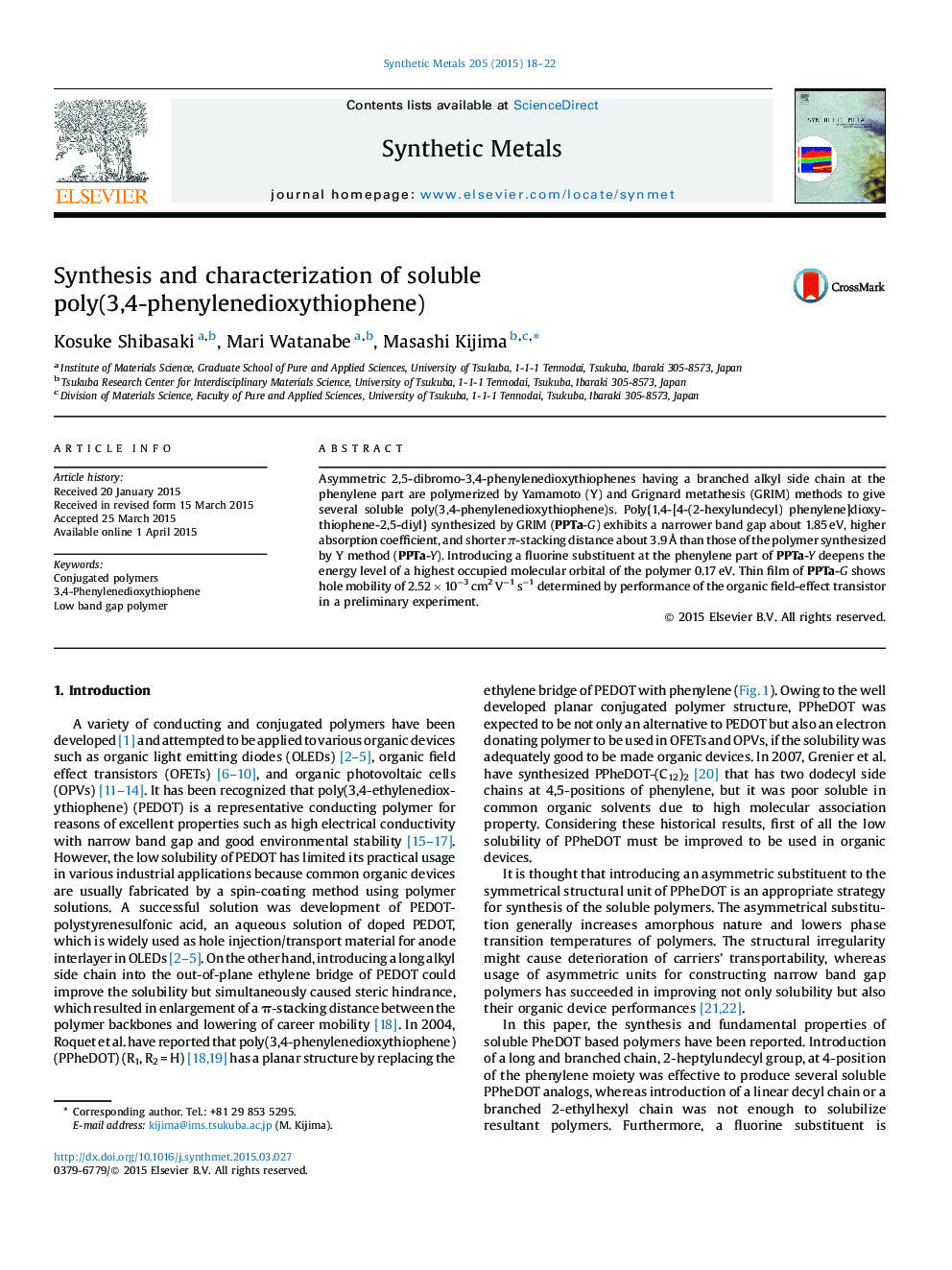| Article ID | Journal | Published Year | Pages | File Type |
|---|---|---|---|---|
| 1440393 | Synthetic Metals | 2015 | 5 Pages |
•Soluble poly(3,4-phenylenedioxythiophene)s (PPheDOT) were successfully synthesized.•Asymmetric monosubstitution and introduction of a branched alkyl side chain were effective for solubilization of the narrow-bandgap PPheDOT.•Additional substitution of fluorine could lower the HOMO level of PPheDOT.•Grignard metathesis polymerization gave regioregular monosubstituted PPheDOT.
Asymmetric 2,5-dibromo-3,4-phenylenedioxythiophenes having a branched alkyl side chain at the phenylene part are polymerized by Yamamoto (Y) and Grignard metathesis (GRIM) methods to give several soluble poly(3,4-phenylenedioxythiophene)s. Poly{1,4-[4-(2-hexylundecyl) phenylene]dioxythiophene-2,5-diyl} synthesized by GRIM (PPTa-G) exhibits a narrower band gap about 1.85 eV, higher absorption coefficient, and shorter π-stacking distance about 3.9 Å than those of the polymer synthesized by Y method (PPTa-Y). Introducing a fluorine substituent at the phenylene part of PPTa-Y deepens the energy level of a highest occupied molecular orbital of the polymer 0.17 eV. Thin film of PPTa-G shows hole mobility of 2.52 × 10−3 cm2 V−1 s−1 determined by performance of the organic field-effect transistor in a preliminary experiment.
Graphical abstractFigure optionsDownload full-size imageDownload as PowerPoint slide
